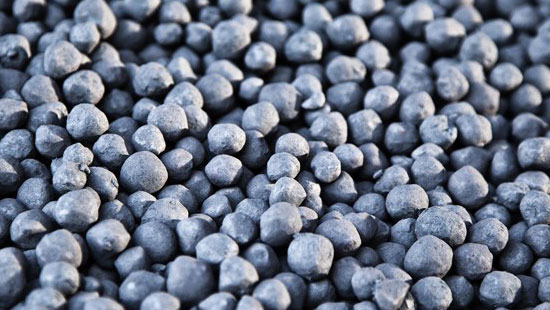Direct Reduced Iron (DRI)
Direct Reduced Iron (DRI) is the product of the direct reduction of iron ore in the solid state by carbon monoxide and hydrogen derived from natural gas or coal. See more information about the production of DRI.
Most gas-based direct reduction plants are part of integrated steel mini-mills, located adjacent to the electric arc furnace (EAF) steel plant. DRI can be either hot or cold charged to the EAF. Some steel companies ship DRI from their captive direct reduction plants to their remote steel mills and a small volume of DRI is sold to third parties. In India there are many small rotary kiln furnaces producing DRI, known locally as sponge iron, using coal as energy and reductant source. Some of the sponge iron plants are captive to steel mills, but there is a significant domestic merchant market, India producing 57% of its crude steel in electric arc furnaces (2016).

At integrated mini-mills, DRI can be hot charged to the EAF, at temperatures in the region of 650° C, thus making significant energy savings
General specifications for DRI (ranges % by weight)
Based on 65.5 — 68% Fe Iron Ore
| Metallisation | 92.0 – 96.0% |
| Fe (Total) | 86.1 – 93.5% |
| Fe (Metallic) | 81.0 – 87.9% |
| C | 1.0 – 4.5% |
| S | 0.001 – 0.03% |
| P2O5 | 0.005 – 0.09% |
| Gangue* | 3.9 – 8.4% |
| Size (typical) | 4 – 20 mm |
| Apparent Density | 3.4 – 3.6 t/m3 |
| Bulk Density | 1.6 – 1.9 t/m3 |
Benefits in steelmaking
For further information about DRI and its advantages in the EAF, see our Fact Sheet:
- Use of Direct Reduced Iron (DRI) in the Electric Arc Furnace (EAF) for Steelmaking
144 Robinson Road, #17-01 Robinson Square, Singapore 068908
(+65) 6384 5186
Give us a call
info@dhatu.com
24/7 online support
